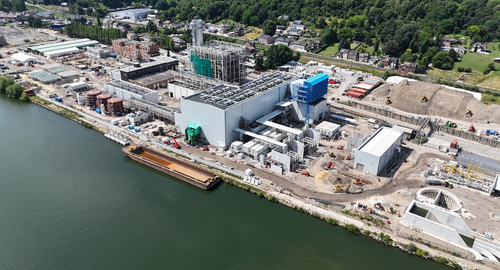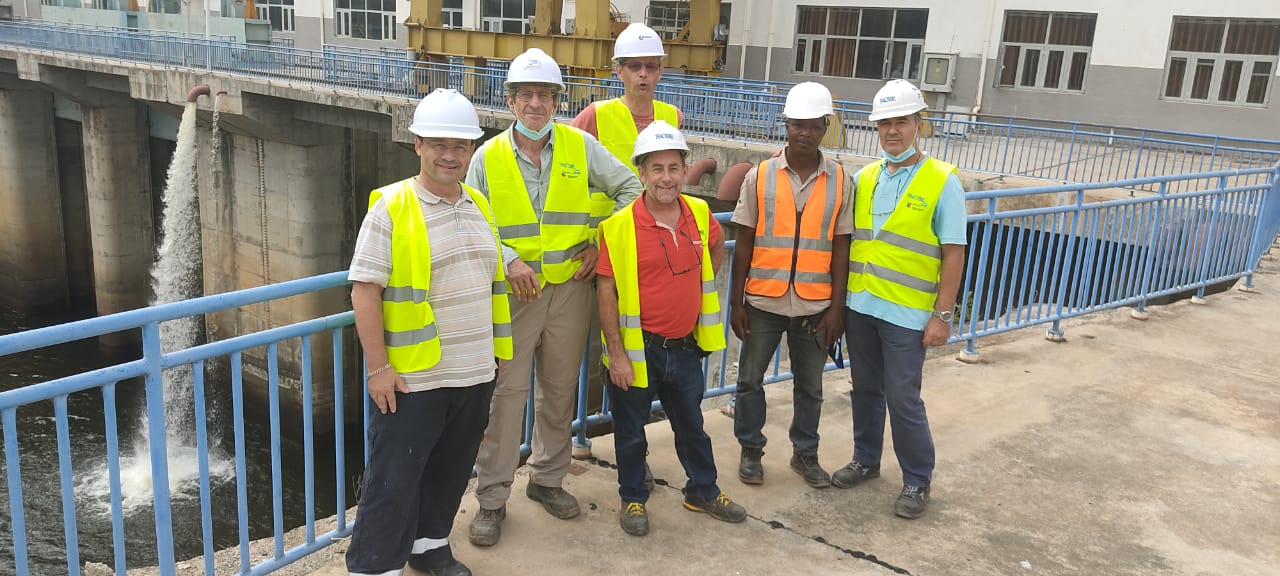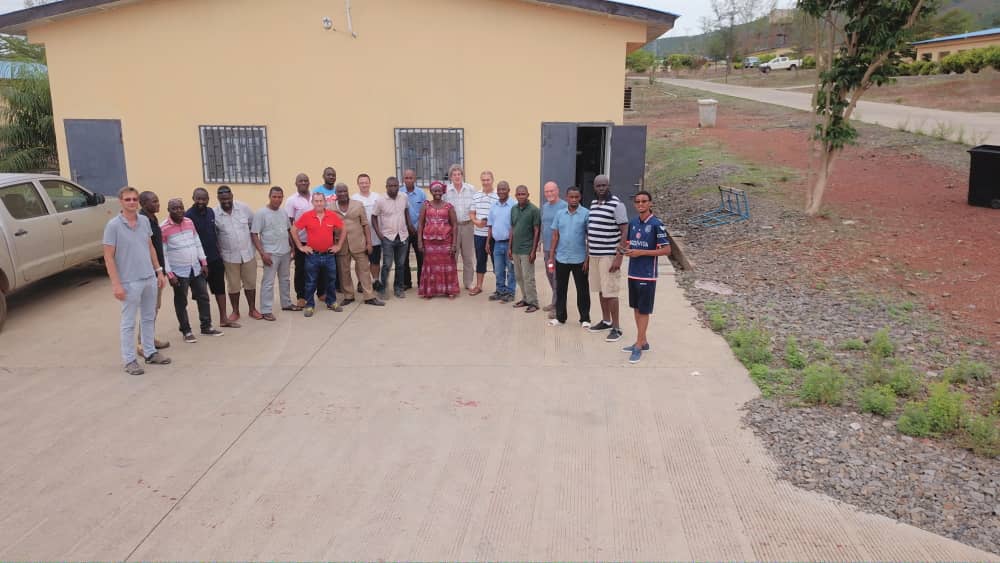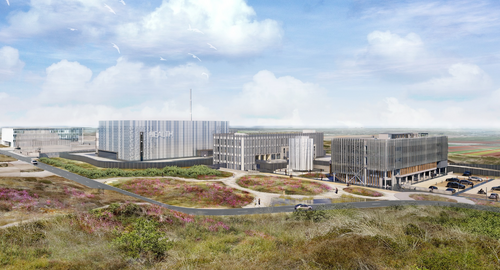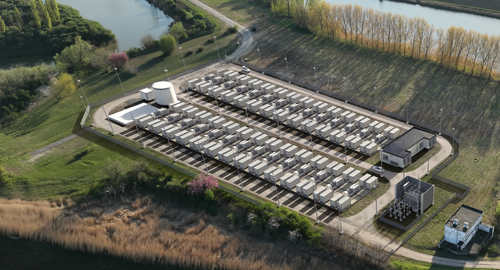For the past five years our engineers have been involved in the construction of the Souapiti hydroelectric facility, including West Africa’s largest roller-compacted concrete (RCC) gravity dam. The new Guinean hydropower plant entered into commercial operation on June 24, 2021, following the provisional acceptance marking the transfer of ownership between the project owner (Ministry of Energy and Environment of the Republic of Guinea) and the operator Société de Gestion et d’Exploitation de Souapiti (SOGES).
Tractebel to assist with the Souapiti hydroelectric development project
Our latest mandate, as assistant to the project manager, was awarded by Guinea’s ACGP (Administration et Contrôle des Grands Projets). The mission includes assisting with the initial works on the Souapiti hydroelectric development project, revision of the Environmental and Social Impact Study and the Resettlement Action Plan, and a complete portfolio of Control and Supervision duties. The project is a result of the renewal of the Control and Supervision contract based on the success of the Kaléta scheme, for which we were Owner’s Engineer from 2011 – 2015.
See our Souapiti Reference Sheet for project details.
West Africa’s biggest roller-compacted concrete gravity dam
A major advantage of the Souapiti dam is its capacity to regulate inflows of the Konkouré River. At 116 metres high, 1.2 km wide and a volume of 3.7 million m3 of concrete, the dam is the largest roller-compacted concrete (RCC) gravity dam in West Africa. Its reservoir contains a colossal 6.5 billion m3 of water, over half the average annual inflow of the river (12 billion m3.) By regulating the river flow to the downstream Kaléta hydropower scheme, Souapiti significantly increases Guinea’s overall hydroelectric capacity. Currently equipped with four turbines totalling 450 MW, Souapiti will supply around 1,900 GWh/year to the Guinean electricity network, plus increase electricity production of the Kaléta plant by an additional 200 GWh/year. Construction of the dam is expected to be finalized in July 2022.
Konkouré River hydro projects: A century in the works
The first studies of the development of the Konkouré date back to the 1920s. Between 1945 and 1950, the overseas services of Electricité de France, assisted by Coyne and Bellier (the former name of Tractebel in France), carried out a complete inventory of the hydroelectric sites of the Konkouré, including Kaléta and Souapiti.
The project continued through 1958, including major field reconnaissance campaigns and the start of work on the Souapiti-Kaléta complex. This consisted of a rockfill dam with an underground power plant in Souapiti, followed by a 6 km-long tunnel to transport the turbinated water downstream of the Kaléta falls. The work was halted in 1958 when Guinea rose to independence.
The project remained at a standstill until 2011, when the Ministry of Energy and Environment of the Republic of Guinea signed an engineering, procurement, and construction (EPC) contract for the construction of Kaléta with China International Water & Electric Corporation (CWE). In August 2015, the Kaléta hydroelectric power plant entered into operation, with a capacity of 240 MW. CWE then proposed to carry out the hydroelectric development project of Souapiti, located 6 km upstream. The contract was signed in January 2016 and 85% financed by Exim Bank.
Looking ahead to a greener, more economically viable future
The Souapiti hydroelectric development was approved on June 24, 2021 by new client SOGES. The company, 51% owned by the Republic of Guinea and 49% by the contractor CWE, is responsible for the operation, maintenance and upkeep of the Souapiti hydroelectric development for a period of 25 years. SOGES has concluded an energy purchase contract with the company Energie de Guinée (EDG), responsible for distribution via Guinea's national network.
The Souapiti teams
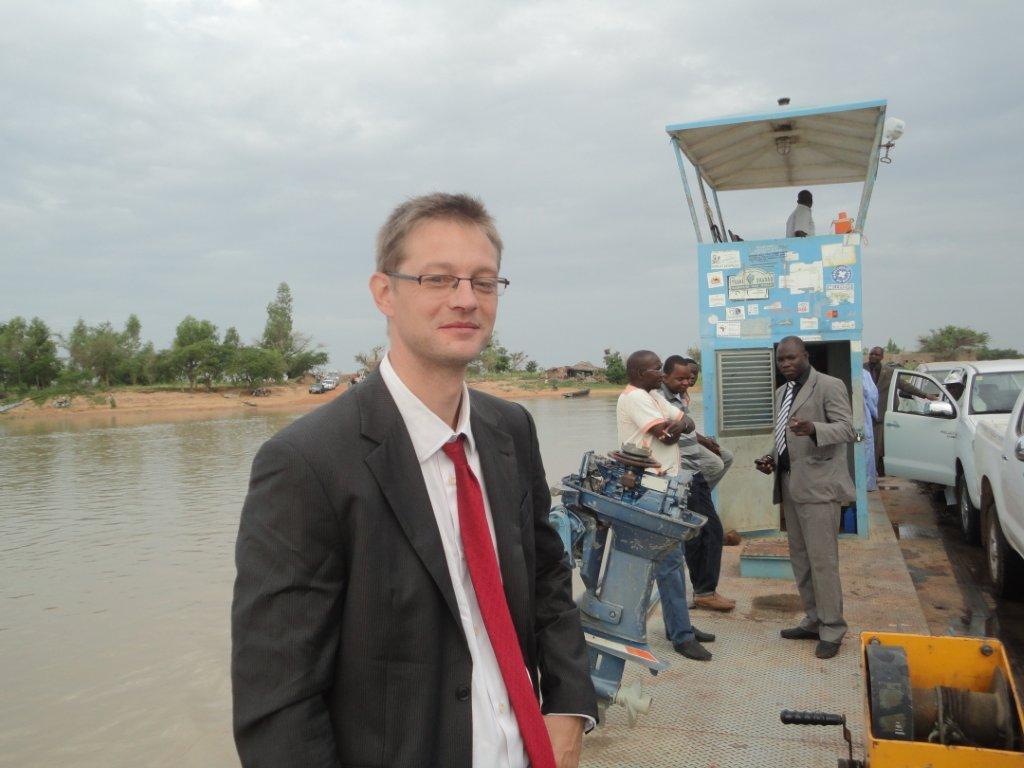 |
“With both the Souapiti and Kaléta hydropower schemes in place, Guinea has access to abundant clean energy to support the country’s economic development. The commissioning of the four Souapiti turbines contributes to improved access for the capital city of Conakry to reliable, inexpensive and low-carbon energy, thus promoting the economic development of Guinea and a better, more sustainable future.” |
Olivier Hatet, Project Manager, Business Line Water
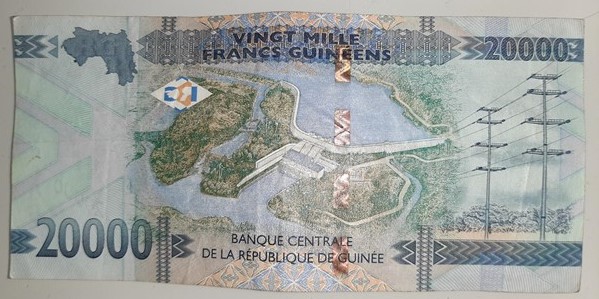
The 20,000 Guinean Franc note was modified in 2015 to include a photograph of the Kaléta hydroelectric scheme, marking the social, economic and environmental importance of this national project. Perhaps Souapiti will be featured on the new 50,000 Guinean Franc note!
